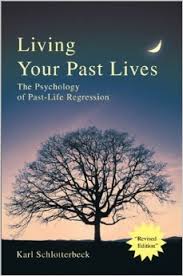 Reviewed by Susan Shore
Reviewed by Susan Shore
In JRT Issue 2, Fall 1986
It is a joy to welcome another book on regression therapy by a soundly-based psychotherapist to the slowly growing but still slim collection currently available. Karl Schlotterbeck’s careful exploration of the roots of past-life psychotherapy and his detailed instruction of appropriate therapeutic processes extend the earlier contributions of psychotherapists Edith Fiore, Morris Netherton, and Irene Hickman in the United States and Thorwald Dethlefsen in Germany. Because at the time, even though it was not long ago, there were so few regression therapists, these books were written largely for the general public. That this book is slanted strongly toward the professional moving into regression work shows how rapidly our group is growing.
The general scope of regression work is still largely obscure, and the author devotes several chapters to restating his understanding of the parameters of this evolving modality, stressing its potential for therapy and the type of patient most likely to benefit from it. Following this, he summarizes the grounding in religion and myth. His presentation of the doctrine of Karma and its implication for past-life work is especially clear, cohesive, and appropriate.
He stresses the development and impact of patterns which re-emerge from previous lifetimes, extending the work of Stanislav Grof with the birth process and the deep patterns set in it. He emphasizes that each person’s psychological construction is already full of residues from past lives at the moment of birth, pointing out that these patterns are reinforced through a crystallization of the karmic patterns during the prenatal and perinatal processes.
Schlotterbeck makes an especially clear contribution to the concept that the family and social climates merely act as triggers for unresolved karmic patterns to express themselves in an effort toward completion. He feels that the internal pressure to actualize this inner programming also causes each individual to seek and construct outer events that will allow their release. Images, dreams, physical symptoms and behavior mechanisms are attempts of the soul to bridge current experiences and past-life memories, thrusts which have as their goal the healing of the organism.
The section of the book dealing with regression therapy techniques recapitulates and extends ideas set forth by other therapists, especially Netherton. Following Netherton, he feels that formal hypnosis is not necessary: rather, focusing on a symptom will draw a trance state as a natural by-product, and imposing too strong a relaxation state beforehand may actually interfere with conscious connection to symptoms.
The author addresses the difficult question of why healing takes place by postulating that it is the release of energy from karmic patterns through both the recall and reliving of them that promotes the healing, a conception held by many, but not all, past-life therapists. It is an extension of the assumption of forms of traditional humanistic therapy carried back to other lifetimes. He emphasizes that in good regression work, the healing and clarity reside in the patient’s own experience rather than in therapeutic interpretation.
Because of the dearth of substantive material on regression work in the psychotherapeutic field, Schlotterbeck has attempted a comprehensive overview which can leave the reader feeling somewhat overwhelmed. If a broader base of professional investigation currently existed, this material would have comfortably divided itself into at least two books. Meanwhile, it serves as a tantalizing taste of many ideas and therapeutic approaches. The integration of various regressions dealing with the Mystery Schools and Initiation, and the chapter on past lives in the Christian experience present an innovative method of synthesis. Those of us in the field of regression therapy deeply appreciate such a rich smorgasbord.
